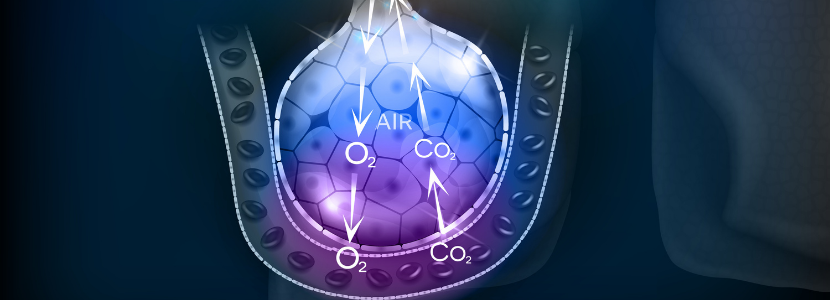Contenido disponible en: العربية (Arabic)
The avian respiratory system has unique features in its structure and function compared to the mammalian, being the most efficient respiratory system of the vertebrates. The respiratory system is involved in maintaining body fluids, absorption of oxygen (O2), releasing carbon dioxide (CO2), regulating body temperature, and rapid acid/base balance adjustments. Birds have a respiratory adaptation related to rib reduction ventilation with a caudal expansion of lungs in the dorsal abdominal cavity. It favors the air sacs development to enhance balance and agility during flight.
Some particularities of the avian respiratory system are:
- The chicken’s lungs are small and do not expand.
- The air sacs (nine of them) are balloon-like features and are found throughout the body.
- Chickens do not breathe using the diaphragm as mammals do because they do not have one. Due to that, they can only breathe by moving the ribs and breast bone.
- The larynx only has three cartilages: arytenoids, prearytenoids, and cricoids.
- The phonation organ is the syrinx (Produces the sounds by vibrations)
The respiratory system is protected by the cilia, mucus secretions, and scavenging cells.
Dust effects
It is widespread to have high levels of airborne dust in poultry houses. The dust comes from feed debris, skin, litter, feathers, and biological contaminants.
“Excessive dust in the air also is believed to result in the formation of caseous tracheal plugs, which adversely affect chickens’ health.”
A study from Penn State University reported that high dust levels resulted in increased mucous production and conjunctivitis in poultry because of an inflammation of the airways and membranes. The authors reported that inflammation is highly associated with microlesions that could be contaminated with viral particles or bacteria commonly found in the dust particle surface.
“Thus, the dust particles serve to
Keep up to date with our newsletters
Receive the magazine for free in digital version
REGISTRATION
ACCESS
YOUR ACCOUNT
LOGIN
Lost your password?

